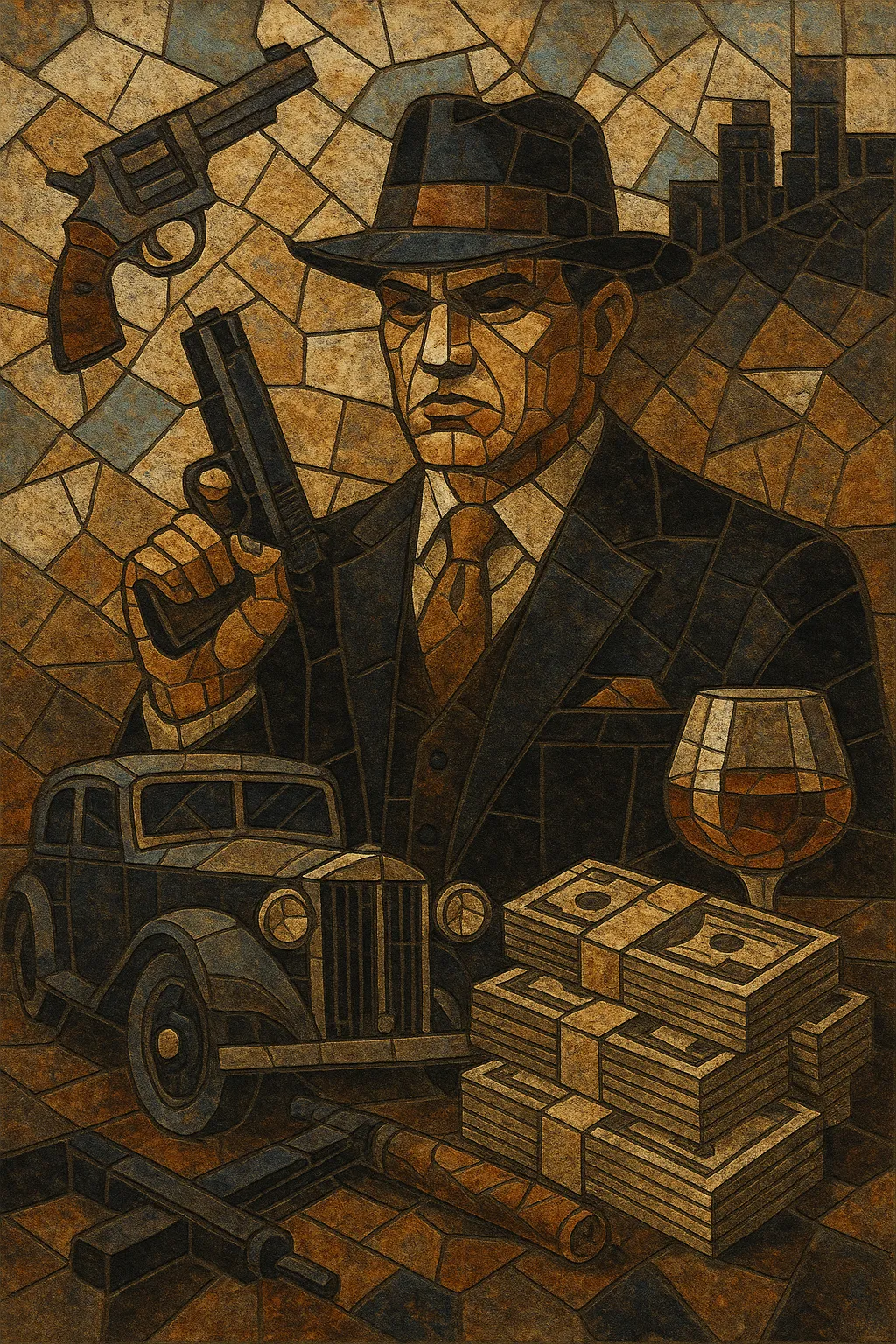
Mafioso rap is a subgenre of East Coast hip hop defined by cinematic storytelling about organized crime, luxury, and power. Artists adopt the persona of mob bosses and kingpins, weaving intricate narratives that reference crime-film mythology, underworld codes, and upscale lifestyles.
Musically, it leans on boom-bap drum programming, moody minor-key harmony, jazzy or soulful samples, and orchestral touches (strings, brass stabs) that heighten a noir atmosphere. Lyrically, it emphasizes multisyllabic rhyme, vivid detail, and complex plots, distinguishing itself from broader gangsta rap through its stylized, filmic approach and aspirational, lavish imagery.
Mafioso rap emerged in the early-to-mid 1990s United States, particularly in New York, as a lyrically dense, cinematic branch of East Coast hip hop. It drew on boom-bap’s hard drums and sample-based production, pairing them with narratives inspired by crime cinema and aspirational luxury. Kool G Rap’s work (e.g., Live and Let Die) laid crucial groundwork with intricate, organized-crime storytelling.
The style crystallized with Raekwon’s Only Built 4 Cuban Linx... (1995), a landmark in crime-epic concept albums, featuring Ghostface Killah and RZA’s moody production. Nas expanded the palette on It Was Written (1996) and The Firm (1997), leaning into sleek, cinematic beats (Trackmasters) and high-gloss mob aesthetics. Jay-Z’s Reasonable Doubt (1996) framed hustler lore with understated jazz-soul elegance, while The Notorious B.I.G.’s Life After Death (1997) fused mafioso imagery with radio-scale ambition. Mobb Deep, Capone-N-Noreaga, AZ, and Tragedy Khadafi further cemented the sound’s gritty yet luxurious balance.
Producers like RZA, Havoc, Ski, Clark Kent, Buckwild, and Trackmasters built a sonic language of minor-key loops, string swells, horn accents, filtered bass, and crisp snares, often sampling soul and jazz. Skits, phone calls, and dialogue-like interludes reinforced the cinematic arc, while cover art and videos borrowed from gangster film visual codes.
By the late 1990s, mafioso rap’s iconography and narrative techniques had permeated mainstream hip hop. In the 2000s–2010s, artists revived or reinterpreted its noir-luxury mood and intricate street narratives, influencing strands of coke rap and shaping the thematic ambitions of New York street rap. Contemporary lyricists who prize detailed underworld storytelling and high-fashion imagery continue to draw on mafioso rap’s template, even as production aesthetics modernize.

